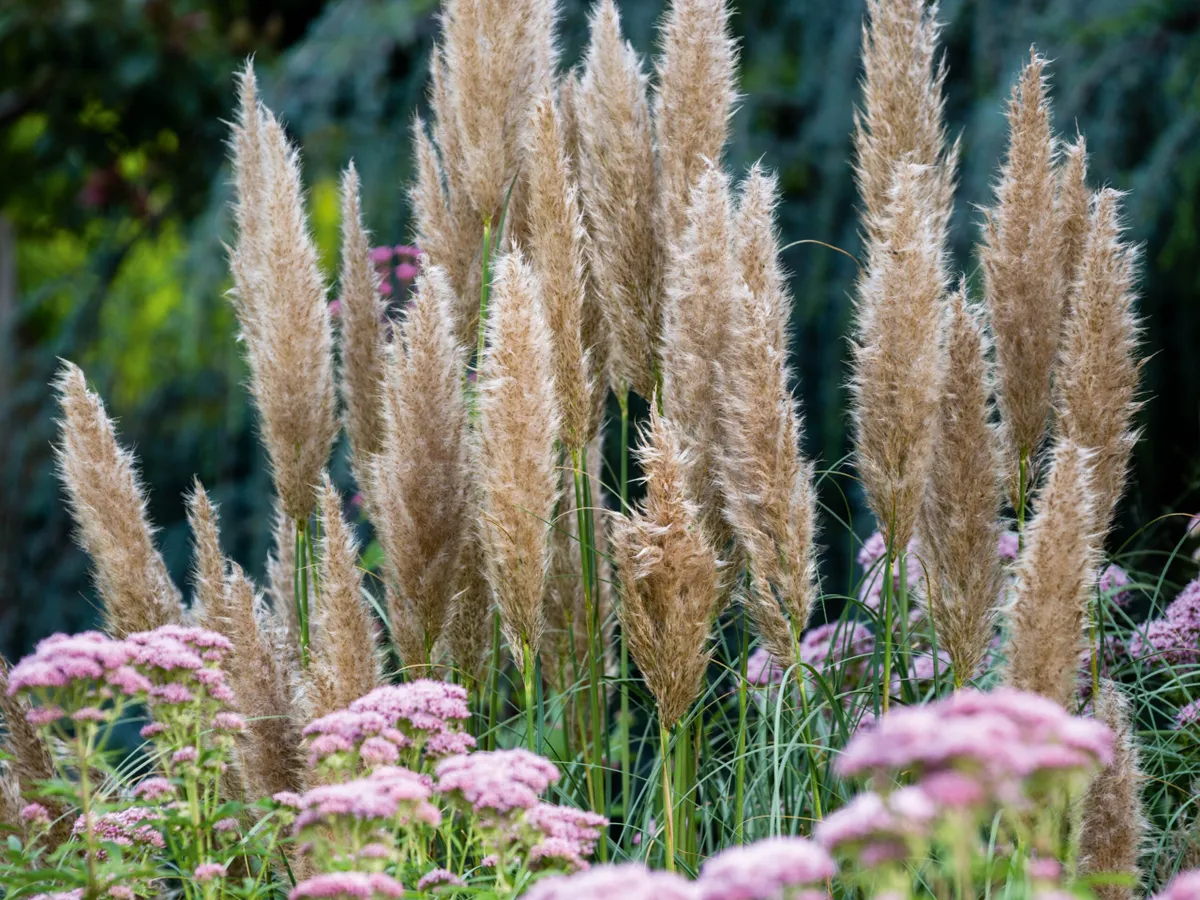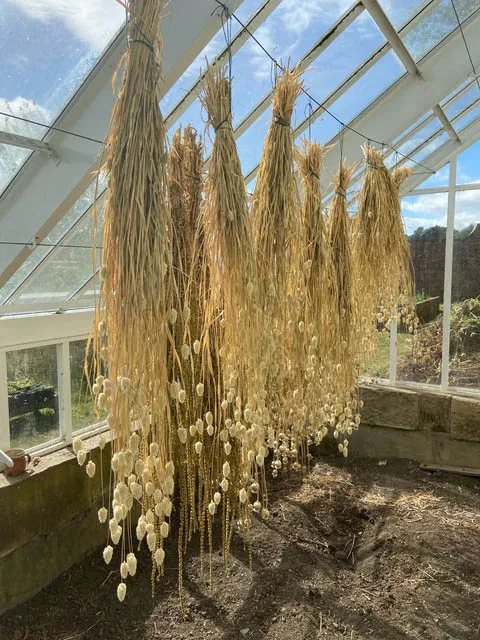A few years ago I interviewed a garden designer who had been charged with creating a garden around a new, modern house on the site of a 1970s bungalow. On the front lawn was a large pampas grass. The designer joked to the owners about the plant's dubious associations, of which they had been previously unaware. When he returned to the site a few weeks later, the offending plant had been ripped out.
Looking to grow pampas grass?
Nowadays the owners might have been happy to leave the plant be, as pampas grass is firmly back in fashion. Or at least, its feathery plumes are. The hashtag #pampasgrass currently has 674,000 posts on Instagram, the vast majority featuring the dried pampas grass. The dried flower heads are popular in modern interiors and are in demand for boho-style wedding bouquets, floral decorations, flower arches and even Christmas wreaths. Dried pampas flower heads are so popular that last year, South Tyneside Council had to ask the public not to cut the flower heads from a beach in South Shields, where it is planted to combat coastal erosion.
South Tyneside Council had to ask the public not to cut the flower heads from a beach in South Shields, where it is planted to combat coastal erosion.
What's the problem with pampas grass?
Pampas grass, Cortaderia selloana, used to be a common sight in front gardens, but fell out of favour, largely thanks to the urban myth that a pampas in a front garden signalled that the homeowners were, ahem, swingers. In 2011, the presenter Mariella Frostrup planted two pampas grasses on a balcony in London, and tweeted that she was shocked by the local response.
However, it appears that we have forgotten pampas' dodgy associations – or that we don't care about them. Whether the passion for the dried flower heads translates into sales of pampas grass plants remains to be seen – but there are some good reasons why you should add a plant to your own garden.
New ways to grow pampas grass

Ornamental grasses add texture and movement to a border and modern pampas grasses are now best grown within borders, as opposed to in the middle of a lawn. Newer, more compact varieties of Cortaderia selloana such as Cortaderia selloana Tiny Pampa are now available, suitable for pots or small gardens. The Austraderia types, such as Austraderia fulvida, hail from New Zealand and have more elegant and arching foliage than their clumpier counterparts. And there are even pink pampas grasses available, which are surely the next big thing.
Growing your dried flowers
By growing your own pampas grass, you will also enjoy an abundance of flower heads without the air miles. The vast majority of dried pampas grass flowers are imported to the UK, and a one-metre stem could set you back £10 or more.
Caroline Beck, a cut flower grower and owner of Verde Flower Co in County Durham, told us: 'Most small UK growers wouldn’t grow pampas grass in any great qualities because it takes a few years to get big enough to harvest.'
Drying pampas grass
If you want to dry the flowers, Caroline says that it's best to cut pampas grass just before it's about to shed. "We then hang it upside down in our glasshouse for about a month, which both bleaches and dries it ready for use."
